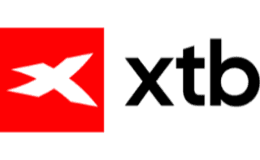
Fractional shares
Free to open an account
The NASDAQ Composite and NASDAQ 100 are both stock market indices, which means they’re collections of stocks that are designed to reflect the performance of the market. In the UK we have the FTSE 100 and the FTSE 250, while the US has the Dow Jones, the S&P 500, the NASDAQ Composite and the NASDAQ 100, among others.
You can invest in an index through an index fund, which is a fund that either holds the stocks in the index or holds stocks in an attempt to mirror the performance of the index — a good index fund has performance close to the index it’s attempting to imitate.
The NASDAQ Composite includes virtually all of the stocks listed on the NASDAQ stock exchange. In order to be eligible to be part of the index, a stock should be listed exclusively on the NASDAQ market and must be a common stock of a company (so any preferred stocks and ETFs will be excluded). The index is supposed to represent the whole NASDAQ market, rather than the largest companies.
The NASDAQ 100 index is a collection of 100 stocks in a range of sectors, including industrial, technology, retail, telecommunication, biotechnology, healthcare, transport, media and service companies. It specifically does not include banking companies, insurance firms, brokerage firms or mortgage loan companies. These sectors are found in the NASDAQ Financial-100.
In order to be part of the NASDAQ 100 index, companies must:
The companies in the top 100 of eligible companies, by market capitalisation, are part of the index. It is rebalanced annually, although there are some instances when it gets rebalanced earlier.
The NASDAQ Composite is virtually every stock on the exchange, while the NASDAQ 100 is just a selection of 100 stocks that you can find on the exchange. Naturally, this means that the NASDAQ Composite is a lot larger than the NASDAQ 100, in terms of the number of stocks and in value.
Again, because the NASDAQ 100 is a mere snippet of the NASDAQ Composite, the NASDAQ Composite is worth a lot more. It’s estimated that the NASDAQ stock exchange is worth $23.46 trillion (around £18.72 trillion).
Both the NASDAQ Composite and the NASDAQ 100 have heavy weightings in technology, 51.42% and 41% respectively. There aren’t any financial companies in the NASDAQ 100, so you’re less diversified if you invest in it, but you could pair it with an investment in the NASDAQ Financial-100, which only holds financial companies.
These trading apps allow you to invest in companies within the indexes directly or to invest in funds/ETFs.



Here are some of the best performing NASDAQ 100 and NASDAQ Composite funds according to JustETF.
| Icon | Fund | 5-year performance | 1-year performance (to Jan. ’24) | Link to invest |
|---|---|---|---|---|
 | HSBC FTSE 100 (HUKX) | 38.39% | 7.84% | Invest with IGCapital at risk |
 | Invesco FTSE 100 (S100) | 37.21% | 7.75% | Invest with IGCapital at risk |
 | Lyxor FTSE 100 (100D) | 37.27% | 7.65% | Invest with IGCapital at risk |
 | iShares Core FTSE 100 (CUKX) | 37.98% | 6.89% | Invest with eToroCapital at risk |
 | Vanguard FTSE 100 (VUKE) | 38.03% | 6.88% | Invest with XTBCapital at risk |
| Xtrackers FTSE 100 (XDUK) | 37.61% | 6.75% | Invest with IGCapital at risk |
| Icon | Fund | 5-year performance | 1-year performance (to Feb. ’23) | Link to invest |
|---|---|---|---|---|
 | Fidelity NASDAQ Composite (FNCMX) | 96.87% | 10.71% | Invest with IGCapital at risk |
All investing should be regarded as longer term. The value of your investments can go up and down, and you may get back less than you invest. Past performance is no guarantee of future results. If you’re not sure which investments are right for you, please seek out a financial adviser. Capital at risk.
![]()
If you’re looking for a whole-of-market investment that gets you access to most of the stocks on the NASDAQ, then the NASDAQ Composite is a good option, as it’s composed of more than 2,500 shares. This would be well diversified, although holds a higher weighting in technology companies.
The NASDAQ 100 would let you invest in a number of companies across all the sectors in the exchange based on their market cap, which gives you high value companies.
| Logo | Company |
|---|---|
 | Apple |
 | Microsoft |
 | Amazon |
 | Tesla |
 | Nvidia |
These trading apps allow you to invest in companies within the indexes directly or to invest in funds/ETFs.
To make comparing even easier we came up with the Finder Score. Costs, features, ease and range of investments across 30+ platforms are all weighted and scaled to produce a score out of 10. The higher the score the better the platform – simple.
Read the full methodologyThe NASDAQ has several different indices, including the NASDAQ Composite and the NASDAQ 100. These are designed to give you some insight into how a market is performing, with the NASDAQ 100 focusing solely on companies that aren’t in the financial industry. You can invest in both of these indices with index funds – NASDAQ Composite funds are harder to come by, but they do exist.
Make sure you branch out into stocks in other countries to further diversify your investment portfolio.
All investing should be regarded as longer term. The value of your investments can go up and down, and you may get back less than you invest. Past performance is no guarantee of future results. If you’re not sure which investments are right for you, please seek out a financial adviser. Capital at risk.
Learn how to invest in the Nasdaq 100 from the UK, including where to access it and some of the best funds and ETFs available to investors.
Here’s your ultimate guide to navigating the world of global investing from the comfort of your sofa or even on your phone on the go.
The three best-known US indices go head to head. Search by company, review performance over time and understand key differences.
Learn how to invest in the Euro Stoxx 50 from the UK and discover some of the best Euro Stoxx 50 index funds and where you can invest in them.
Find out more about the Nikkei 225, some companies that make it up and how you can invest in the Nikkei 225.
Find out what makes up the Hang Seng index. We’ve compiled the different ways that you can invest in Hang Seng, such as through ETFs.
Find out how to invest in DAX, the 40 largest companies on the Frankfurt Stock Exchange. We’ve compiled some ETFs and other ways you can invest.
In a nutshell, an index fund is a low-cost portfolio of shares and other assets that tracks a financial or stock market index. They’re a popular investment choice in the UK and worldwide.
Learn how to invest in the S&P 500 from the UK and discover some of the best S&P 500 index funds and where you can invest in them.
The FTSE 100 is the UK’s most famous stock index. Here’s how you can invest in it today.